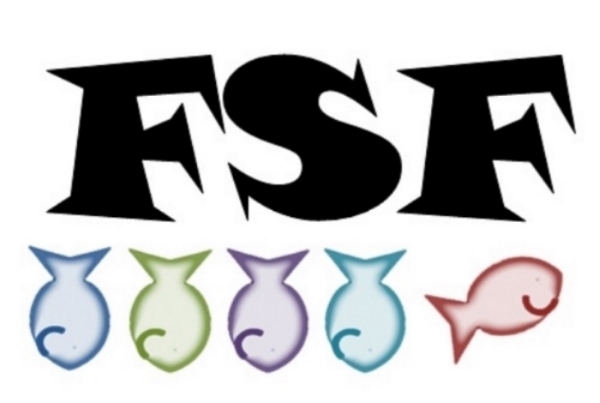If Cinderella had been 30
Once upon a time there was a grand house where an old woman, her two grown daughters, and her grown step-daughter lived. Since she had been a teenager, the step-daughter had been treated at the servant of the house, made to dress in the ragged, cast-off clothes of her sisters and sleep near the kitchen hearth. Because of her dirty appearance, they called her Cinderella.
Each day, Cinderella toiled endlessly as the only person to keep her demanding family fed and content, knowing that if she were to leave she would have no other opportunities to work. After all, she was 30. A spinster. An old maid. Who would possibly hire her?
One summer day, a messenger arrived at the house declaring there was to be a ball at the royal palace. Cinderella helped her awful step-family prepare as they gloated over their good fortune at having been invited. As they rode away in their rented carriage, she despaired. One night out sounded so nice.
As she went back to scrubbing the floors, a mysterious figure appeared before her. The elderly lady stooped over a cane and smiled down upon Cinderella.
“I suppose you’re wondering where I have been all of this time?” she asked with a kind smile.
Within her mind, Cinderella scoffed, “Actually, I was wondering if you wiped your feet before walking on my clear floor.” Out loud, she demurely asked, "Who are you?”
”Your fairy godmother, of course! I have been waiting for an opportunity like this to be of help you to you!”
“You know of a different place of employment that offers free room and board, but where I won’t be psychologically abused?” Cinderella asked hopefully.
“No silly, I am going to send you to the ball!”
“Oh. That’s good too., but I wouldn’t mind a more permanent solution to my current living situa-”
“Follow me out the the garden!” the fairy godmother interrupted and Cinderella obeyed.
Within twenty minutes, the magic of the strange old lady turned a pumpkin into a carriage, mice into horses, lizards into footmen, a rat into a driver, and Cinderella’s dress into a gorgeous gown draped over delicate glass slippers.
As Cinderella realized how long it had been since she’d worn heels, the fairy godmother chastised her about curfew. “You must leave before midnight or everything will turn back to what it was before. I know it’s a lousy thing to ask, but it must be midnight.”
“Midnight. I won’t forget.” She thanked the strange old lady, climbed into the carriage, and prepared to have her first night out since she was sixteen.
When she arrived, Cinderella was instantly the belle of the ball. The prince, a man who had waited till he was older to marry (which was fairly common in that time period - look it up) was instantly taken with her. This was not only due to her beauty, but her conversation. Truthfully, many of the younger women at the ball had caught his eye, but hours of trying to speak with twenty-one year olds had left him bored. He craved speaking with someone from his own generation.
They danced and talked and Cinderella paid close attention to the clock hung strategically over the ballroom. By nine pm the prince offered her a drink and they both sat down.
He told her of the five diplomatic meetings in a row he’d conducted directly before the ball. She told him of her gardening that had to be finished that day or the carrots and onions would have spoiled. Neither wanted to admit that their feet were killing them.
By 9:30, the elderly king who had been observing all from his comfortable throne went in search of his son. He was curious about the lovely young woman monopolizing the prince’s evening. He found them both on a bench in the palace gardens, fast asleep. The king ordered a blanket to be placed over them.
Midnight struck and the pair of tired adults dozed on the bench, Cinderella’s head resting on the prince’s shoulder. All of her changed back, the only item remaining in its magical state being her glass shoes.
The sun rose and at last the pair awoke. At first, Cinderella panicked, ready to run from the prince with the blanket hiding her grimy dress. However, the prince was a covers hog and managed to pull the blanket with him as he stood to stretch.
“That was a surprisingly good night’s sleep.” He glanced down at her as she awaited the verbal berating. Instead, he rubbed the back of his neck. “Weren’t you wearing- Nevermind. I must’ve been more tire then I thought. Breakfast?”
And so, the prince helped Cinderella up from the bench. She limped slightly as they walked towards the palace doors and her noticed the glass slippers still chiming along the pavement.
He sat her back down and, without any further explanation, ran into the castle without her.
Cinderella owned up her look, deciding it was too late to fuss with the rag on her head or the apron on her waist. She thought maybe the prince was going to get the head cook and maybe offer in a job in the kitchen. Although, it would be hard to see the prince and not be able to speak on equal terms ever again.
When the prince came back, both hands were behind his back. He knelt down before her and asked her to remove her shoes. She did so and he slipped a pair of fuzzy bedroom slippers on her dainty feet. They were like walking on pillows.
“That better?”
She nodded.
And so they ate breakfast and talked. Somehow, breakfast led to marriage and happily ever after where no one ever made them stay up past ten on a long day ever again. That is until their first kid was born. But that’s a different exhausting story.
The End.


